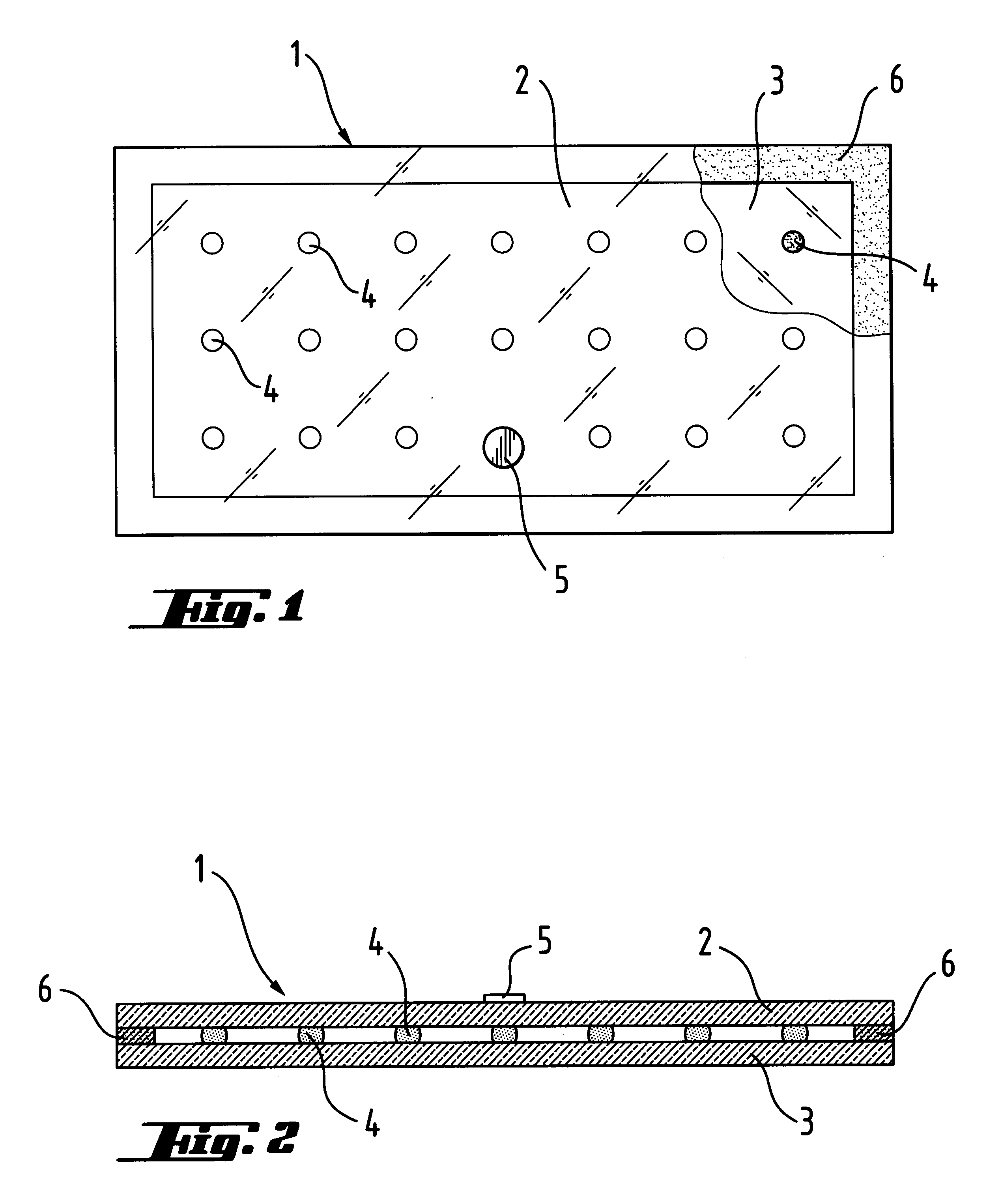Method for producing a vacuum between two glass sheets and insulating glazing
a technology of insulating glazing and glass, which is applied in the direction of layered products, transportation and packaging, units with parallel planes, etc., can solve the problems of not always easy to use, difficult to produce, and the need for a perfect leaktight seal between the two sheets of glass
- Summary
- Abstract
- Description
- Claims
- Application Information
AI Technical Summary
Benefits of technology
Problems solved by technology
Method used
Image
Examples
Embodiment Construction
FIG. 1 represents a top view of insulating vacuum glazing 1. This glazing 1 consists of two sheets of glass 2, 3 held at a distance from one another by spacers 4 which are visible in transparency in FIG. 1. The sheets of glass are 4 mm thick and have previously undergone toughening heat treatment with a view to reinforcing their mechanical properties so that they withstand the stresses which are exerted when the vacuum is formed.
In FIG. 1, it is apparent that these spacers 4 are distributed over the entire surface of the glazing 1 in a regular way. They are spaced 30 millimeters from one another. This distribution of the spacers 4 makes it possible to keep a space between the sheets of glass 2, 3. Their number, dimension and distribution are determined so as to guarantee high strength for the glazing 1 and to prevent any risk of contact between the sheets of glass 2 and 3, and so as not to create too large a thermal bridge and not to impair light transmission.
Moreover, the spacers 4...
PUM
| Property | Measurement | Unit |
|---|---|---|
| temperature | aaaaa | aaaaa |
| thickness | aaaaa | aaaaa |
| diameter | aaaaa | aaaaa |
Abstract
Description
Claims
Application Information
 Login to View More
Login to View More - R&D
- Intellectual Property
- Life Sciences
- Materials
- Tech Scout
- Unparalleled Data Quality
- Higher Quality Content
- 60% Fewer Hallucinations
Browse by: Latest US Patents, China's latest patents, Technical Efficacy Thesaurus, Application Domain, Technology Topic, Popular Technical Reports.
© 2025 PatSnap. All rights reserved.Legal|Privacy policy|Modern Slavery Act Transparency Statement|Sitemap|About US| Contact US: help@patsnap.com



